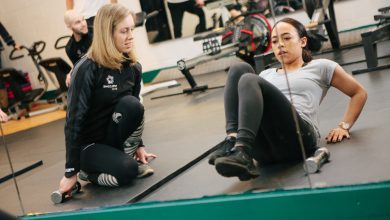Crafting Assistive: Living with a disability can spark a spirit of invention. Ordinary objects often hold hidden potential to become assistive tools, boosting your independence and enhancing your ability to manage everyday activities.
This guide explores creative ways to transform readily available materials into functional aids, empowering you to personalize your living space for greater accessibility.
1. Building Up Your Grip with Everyday Supplies
Many household items can be adapted to improve grip and functionality. Consider using non-slip drawer liner, a readily available product found at most hardware stores. This liner provides added texture and traction, making tools and utensils easier to grasp.
Cut the liner into strips and wrap them around handles, securing them with tape or strong glue. Alternatively, explore textured rubber bands, which can be stretched over handles for a comfortable, non-slip grip.
These simple modifications can make daily tasks like opening jars or gripping utensils significantly easier.
2. Cutting Services for Personalized Assistive Devices
In the case of more intricate modifications, think about contacting a laser cutting service to make them for you. These services employ lasers to precisely cut various materials, including wood, acrylic, and even thin metals.
This technology allows for the creation of custom-designed assistive tools. For instance, cutlery handles can be laser-cut with enlarged or angled shapes to accommodate specific hand strengths and limitations.
Laser-cutting can also be used to create custom key guards or button pushers, making it easier to operate small buttons or touchscreens.
3. Repurposed Clothing for Comfort and Support
Old, comfortable clothing can be transformed into functional aids. Cut the leg of a sturdy pair of jeans to create a sleeve for a heating pad or ice pack, providing targeted pain relief for sore muscles or injuries.
Large, soft T-shirts can be refashioned into comfortable leg or arm wraps for additional support or warmth. For those who use wheelchairs, old sweatpants can be cut and sewn into padded seat covers for added comfort during extended periods of sitting.
4. Shoebox Solutions for Organization and Accessibility
Empty shoeboxes offer a wealth of organizational possibilities. Decorate them and use them to store frequently used medications, craft supplies, or assistive devices. Shoeboxes can also be repurposed into drawer dividers, keeping items organized and easily accessible.
For those who use wheelchairs, sturdy shoeboxes can be stacked and secured to create a raised platform for accessing countertops or cabinets. Remember to reinforce the boxes for added stability and weight capacity.
5. Disposing of used oil responsibly
While we’re on the topic of resourcefulness and responsible living, it’s important to remember that some items shouldn’t be reused. Used motor oil, cooking oil, and other lubricants can be harmful to the environment if not disposed of properly.
The use of waste oil disposal programs is a great way to ensure that these materials are recycled or disposed of responsibly. Look for local programs that accept used oil in your area. These programs often partner with auto repair shops or recycling centers to collect and process used oil, preventing it from contaminating soil and water sources





